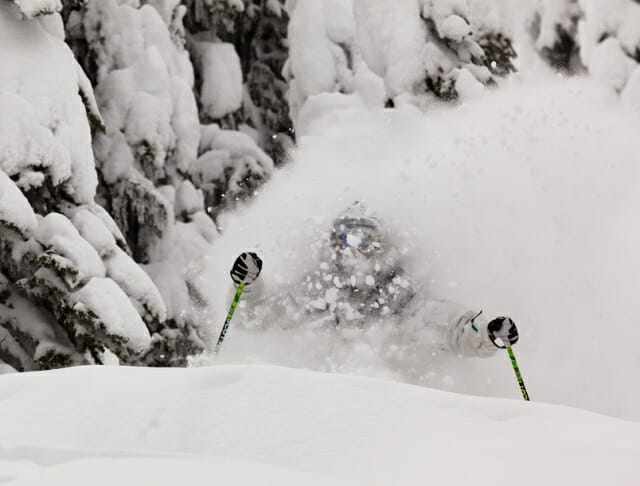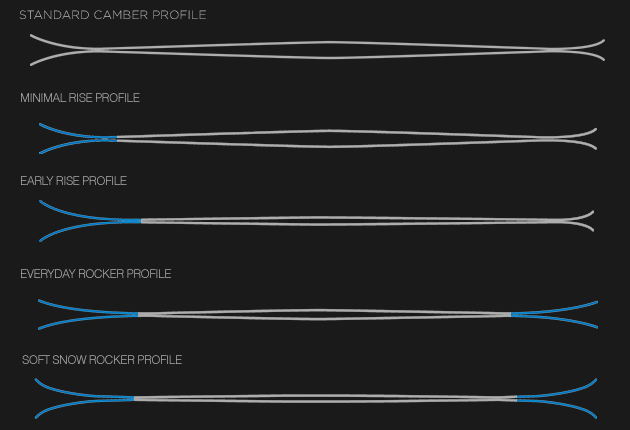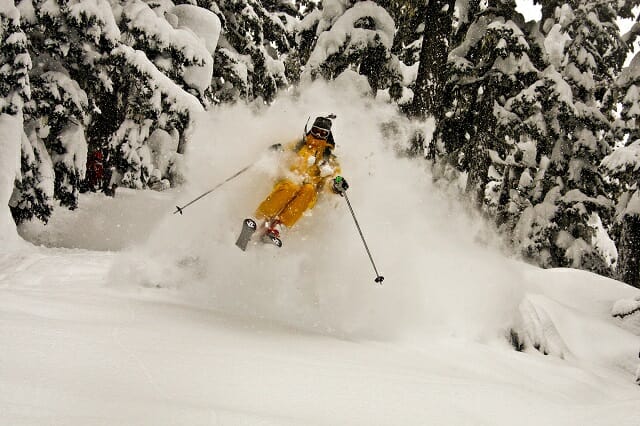Ski and Snowboard Camber and Rocker Explained
When you pick up a ski or snowboard these days, terms like ski camber and rocker are common, along with ‘early rise. The thing is, these are all pretty much the same thing. When ski companies design a ski they have to consider important factors such as material and shape, but the character of how a ski performs also depends on its camber profile and amount of rocker.

Understanding Ski Rocker and Camber in Modern Ski Designs
Just what is a camber profile? Camber refers to the upward curve in the center of a ski, while rocker describes the rise of the tips and tails. It’s best explained with the diagram below.
The traditional full camber profile has been around for decades and is one of the biggest reasons carving skis are so much fun on the groomers (parabolic cut shape being another). Camber adds significant stiffness to a ski and acts as a sort of suspension. You feel that suspension as the ski is loaded with weight and centrifugal force going into the turn, followed by a pop of energy coming out of the turn.

But as awesome as camber is on the groomers and race courses, it can be detrimental in deep snow where the ski tips tend to dive, which is why rockered ski designs with lifted tips have become popular for off-piste adventures. The ski industry band-aid fixed that issue by just making skis wider into the 130mm+ underfoot range, but soon started to rethink its approach. Around 2001, legendary skier Shane McConkey coined the term “reverse camber” in reference to the Volant Spatula, a ski he designed with engineer Peter Turner. The idea was for a ski to have the opposite camber profile to enhance flotation in deep powder snow, similar to that of surfboards and other watercraft. The term “rocker” was inherited by the ski and snowboard industry because, well, it sounds a lot cooler.
It took a few years for the rocker to catch on, but you now find it in most all-mountain skis and snowboards, powder-specific or not. Many ski designs use it solely in the tip of ski (also called “early rise”), to make skis float better in powder but incorporating rockered sections at both the tip and tail also allows for easier turn initiation in chop and firmer snow

Now, while a full rocker profile might sound attractive (particularly for AC/DC fans), before you throw your money at a pair of full rocker skis you may want to note their deficiencies. Namely, if you’re not skiing in deep and mostly untracked powder, they don’t have the stiffness and stability of cambered skis. That’s why a lot of all-mountain skis these days opt for a slight amount of tip rocker and minimal tail rocker, if any.

Most ski brands had their period when the rocker was all the rage, but it’s used a bit more conservatively in design these days. Your choice of what ski camber and rocker to use should be influenced by the skiing conditions you face and your skiing style.


